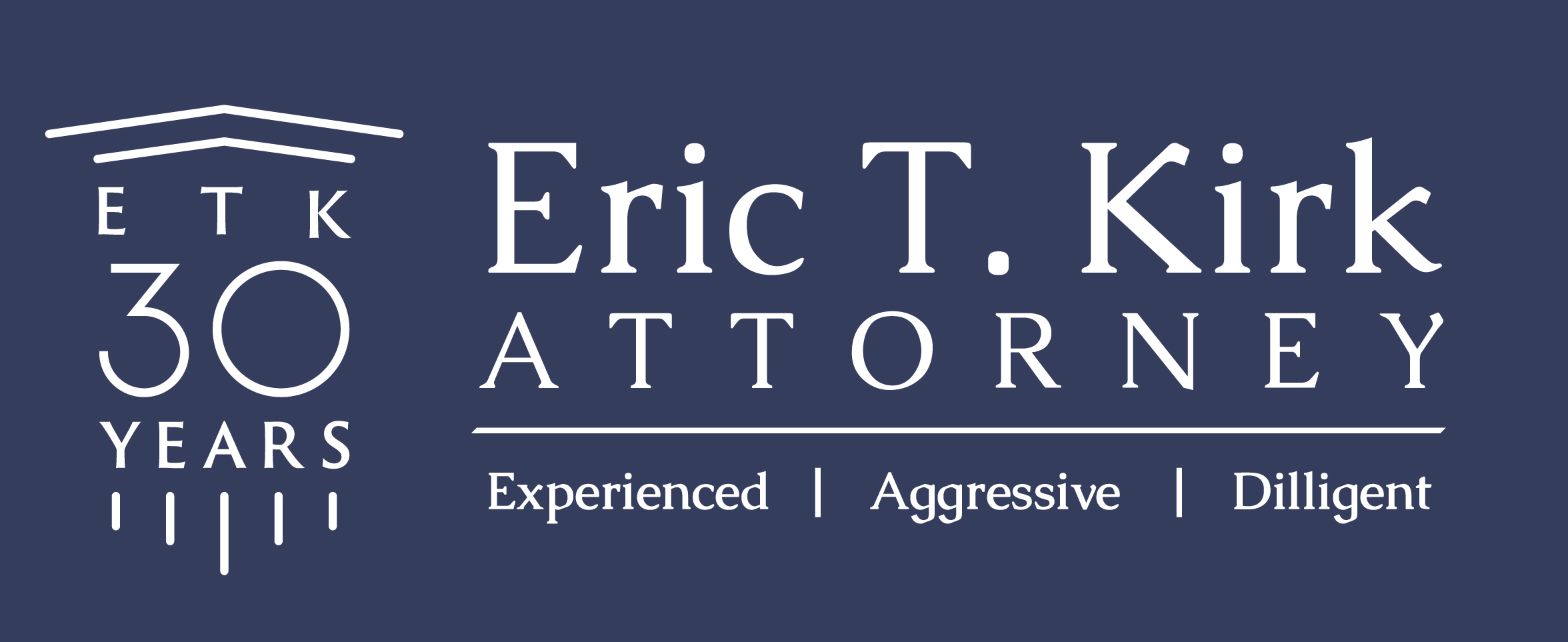I adamantly believe every injury victim should have access to diligent, effective representation in their quest to achieve fair compensation. I am also committed to providing that representation at a fair rate. Please feel free to contact me directly if you have any questions about my reduced fee program.

Many lawyers handle personal injury matters under what is known as a contingency fee arrangement. The “contingency” aspect means that something must occur for a fee to be earned by the attorney- specifically, a financial recovery. Usually, the lawyer will advance the costs of litigation, and, if there is a financial recovery, the lawyer will retain a percentage of that recovery as his or her fee. However, if there is no recovery obtained by the lawyer, there is no fee -and generally, no litigation costs- charged to the client. This allows the victim of negligence, who may be out of work, or disabled because of the accident, to hire an attorney to pursue the claim without having to pay a sizeable retainer or high hourly fees up-front.
“Under my Reduced Fee Program, your fee percentage is always limited.”
Practices vary from lawyer to lawyer and jurisdiction to jurisdiction. In Maryland, a common contingency fee arrangement calls for the lawyer to retain 33.3 % of the amount recovered in the case as a fee, and, under some agreements, lawyers may retain 40% of the amount recovered as a fee if a lawsuit is filed, and the claim is litigated. Under my reduced fee program, attorney’s fees are always limited to 30% on a presuit recovery, and 35% if the case goes to litigation.
What Is Your Reduced Attorney Fee Program For Maryland Personal Injury Cases?
Are There Advantages In Using The Reduced Attorney Fee Program for a Personal Injury Case?
How Does The Reduced Attorney Fee Program Save Me Money On My Personal Injury Case?
Now, five percent may not seem like a lot of money. But the benefit-and the additional money in your pocket- is very real. Let’s look at the contingency fee contract offered by a firm under the common 33.3% – 40% fee arrangement. For example, and by way of illustration only, assume that there is a recovery in a fairly routine case after trial of $20,000 from a person found at fault for causing the accident. Under the common 33.3% – 40% contingency fee contract, the attorney’s fee would be $8,000. Under my reduced fee plan, the fee would be limited to $7,000, leaving an extra $1,000 in the client’s pocket.
Contingency fee agreements in civil cases have long been used and are common in the United States. Contingency fee percentages may be limited by statute in certain types of claims, and of course, those limits would always apply. You and your attorney should discuss preferred alternative fee arrangements, such as flat rates, or hourly billing. Often, however, injury victims are without the resources to hire a competent attorney to bring claims against large corporations and insurance companies with unlimited resources. The largest insurance companies in this county post profits in the tens of billions of dollars each and every year. Many times, a contingency fee arrangement is the only viable option in the face of those resources.
For more than a decade I’ve been proud and honored to extend a reduced attorney fee program to Maryland residents that have been injured through the negligence of another. I’ve extended this program to hundreds of Marylanders who have been injured in car accidents, falls, and other mishaps where allegations of negligence have been made. The program has saved thousands and thousands of dollars in attorney’s fees for our clients. Most attorneys who handle personal injury cases on what is known as a contingent attorney fee basis.

Contingent means, generally, that something must occur before an agreed-upon condition comes into play. In this context, another word for contingent might be conditional. In a contingency fee arrangement, there must be a financial recovery of compensation made on behalf of the injured person in order for there to be any attorney’s fee due or owing. In a contingency fee arrangement, if there is no financial recovery, the client owes the attorney no fee. This is sometimes expressed as a “no-cost unless we win” of arrangement. Under this type of agreement, if there is an award of compensation for the injured person, either by way of settlement or verdict after trial, a percentage of that award is applied on account of attorney’s fees.
In Maryland, a common contingency fee arrangement calls for the attorney to retain 1/3 of any recovery that is secured prior to the commencement of litigation, and 40% of any recovery that is secured after a lawsuit is filed.
Under my reduced attorney fee program, the percentages that are applied to the award to determine the attorneys are lower than those generally and more typically found in the community.
Under our arrangement, attorneys fees are limited to 30% of any pre-suit recovery By “pre-suit” it is meant any recovery by the way of an amicable pre-suit settlement, after thorough and exhaustive negotiations with the claims adjuster, but occurring before a lawsuit is filed. If we have to litigate the case by filing a lawsuit, engaging in litigation, and/or trying a case the contingency fee percentage is 35% as opposed to 40% under the common arrangement frequently in this area.
A contingency fee arrangement is of course not the only basis upon which an injured person can secure the services of experienced counsel in a personal injury matter. You should always discuss and explore alternative methods of payment services. I Attorney Eric T. Kirk have certainly found over the years, however, that in many instances an individual
- who has been injured in an accident through no fault of their own
- who is missing work or unable to earn the income they once did
- who has mounting medical bills that cannot be met
simply lacks the financial resources to pay an attorney a large retainer, a flat fee, or hourly rates of several hundred dollars per hour. It is in these circumstances that the contingency fee arrangement is put to its most effective use. The injured individual does not have to worry about incurring upfront legal costs. The attorney, who has agreed to work for free until the case is won, also assumes the risk that it will not be won. This allows the injured person who might not have the financial means to hire counsel, to obtain counsel of their choosing without facing another crushing financial situation, at a time when they can least afford that burden.
I’m always honored to talk to accident victims about their claims. I extend a complimentary meeting, case analysis, and legal advice to those injured by the negligence of others. Contact me to set up a time.
I Attorney Eric T. Kirk encourage those that have been injured in automobile accidents and other personal injury causing mishaps to explore the various attorney fee payment methods available when hiring a personal injury lawyer. Probably the most common and widely accepted method and formula for payment for labor, and certainly the most frequently used for the last century or so, is payment based on hours worked. Whether that payment is for an 8 hour shift as a clerk at a convenience store, a shift on an assembly line in a plant, hours expended in the preparation of a tax return, or for an attorney performing work on his or her client’s case, the idea is the same. An hourly amount for each hour of work. An agreed upon amount for each hour of labor performed is a long-standing time-honored and virtually universally accepted method of payment for services. Another frequently used method of payment for services rendered is a flat fee or “by the job rate”. Whether that is for craftsman constructing a patio deck, a doctor’s fee for needed surgery, or an agreed-upon fixed amount for an attorney to handle a case, the concept here is the same.

A flat fixed fee is an agreed-upon amount, in full, for the completion of the task rather than payment for the amount of time necessary to complete the job. There may be other methods of payment that you and the attorney of your choosing in your personal injury matter can explore, and agree to, if appropriate. You and your attorney should discuss preferred alternative fee arrangements, such as flat rates, or hourly billing. I consistently see that the contingency fee arrangement is usually the best method available in the typical personal injury case. In my experience, an individual insured in an accident who is in pain and often disabled temporarily, or perhaps permanently out of work and unable to meet normal household expenses due to financial strain, is typically not going to be able to pay an attorney by the hour, or front a flat fee to handle their personal injury case. The contingency fee arrangement is uniquely and ideally suited for precisely this type of situation. The injury victim, who has their own recuperation deserving of their full time and attention, just does not need to worry about the upfront payment of an attorney. To the extent that there are family resources available during the process of recovery, those financial resources should be devoted and allocated to the needs of the family. An attorney handling the case for free, or on a deferred payment basis, uniquely and singularly meets those needs.
There are other advantages as well. Perhaps the primary of these is that the attorney under a contingency fee arrangement assumes the risk of the case not being successful. If, for whatever reason, the claim does not result in a recovery of monetary compensation for the injury victim, the attorney is not paid There are a variety of reasons then they claim might not be successful.
- Perhaps the insured individual is determined to have caused or contributed in some way to the happening of the accident and barred from recovery.
- Perhaps there is no insurance available to cover the loss.
- Perhaps the injured person just simply decides not to pursue the case.
In all of these scenarios, the attorney handling the case has worked for free.
Certainly, anyone that would agree that free labor, especially the services of a skilled injury lawyer, gratis, is an enormous benefit.
Under a contingency fee arrangement a personal injury attorney is typically willing to advance to the client the cost of the case. These may range from the payment of medical records, up to the hiring of a skilled surgeon or physician who may be called upon to provide expert opinions in the case. If there is a monetary recovery, then these advanced costs are typically reimbursed. If there is no recovery, the attorney simply consumes the costs as that of a cost of doing business. If there is not recovery, then the client is typically not responsible, unless a contrary agreement has been reached.
I invite all potential clients to participate in a no-cost analysis and strategy conference. Contact me today to arrange a time to meet. 410 591 2835, or simply complete the form at the bottom of the page.
There are two things to keep in mind here. the first is that my reduced contains a lower attorney fee percentage than that typically found in personal injury fee arrangements commonly seen in Maryland. The second is that, by definition, it is a contingency fee agreement. In this regard, it’s really no different than any other contingency fee plan. The appeal, and advantage, of the contingency fee agreement when used in an injury and related case is that the client- the injured person- bears no responsibility for attorney’s fees or costs at the outset of the case or on an upfront basis. As Attorney Eric T. Kirk will tell you.
It is only where the case is brought to a successful conclusion, and there is a financial recovery for the injured person, that attorney’s fees are assessed.
If for whatever reason there is no financial recovery on the case, a contingency fee arrangement means that the client owes nothing. There may be a variety of reasons why a case ultimately bears no fruit what or there is no recovery of compensation.
- A case could be overturned on appeal
- An uninsured defendant might lack the assets to satisfy a judgment
- The client could opt to discontinue the case
- A case could be settled on non-financial terms
The second principal advantage is that the attorney fee percentages under my reduced attorney fee program are lower than those typically found in common personal injury arrangements in Maryland. By way of hypothetical illustration, only, assume there is a recovery in the form of a jury verdict after trial in the amount of $50,000 on a significant personal injury case.

Under the common 40% contingency fee arrangement, the attorney fee would be $20,000, due to the attorney who tried, and won, that case. [i.e. 40% of 50,000] Under my reduced fee program the percentage would be limited to 35% or $17,500 as a fee due after a successful trial. The difference -$2,500- would end up in the client’s pocket as additional compensation. Contingency fee percentages may be limited by statute in certain types of claims, and of course those limits would always apply. You and your attorney should discuss preferred alternative fee arrangements, such as flat rates, or hourly billing. But, particularly in the case of debilitating injury, the contingency fee arrangement allows the injured person the freedom to employ personal injury counsel of their choice without consideration of their financial resources- at a time when those resources may be sparse.
I have have been prosecuting personal injury case cases for more than 20 years. I’ve handled thousands of cases in that time. I invite all potential clients to participate in a no-cost analysis and strategy conference. Contact me today to arrange a time to meet. 410 591 2835, or simply complete the form at the bottom of the page.
The principal advantage in the reduced fee program may be no different than the greatest advantage in all contingent fee arrangements. It may well be the absolute lack of risk to the injured person. Under a contingent fee arrangement, for the client or injury victim, there’s no exposure or risk of non-recovery. In other words, the personal injury attorney is working for free unless and until there is a recovery.
It is only when the injured person is compensated for their injury, in the form of money damages or settlement funds, that the client owns a portion of that recovery to the attorney as his or her fee.
If there is no recovery, then there are no attorney’s fees due or owing. This notion is sometimes expressed as a “no costs unless we win” type of arrangement. Moreover, in some instances, the attorney will advance the costs of the litigation. Sometimes these can be quite substantial. For example, the retention of an expert witness to give needed opinion testimony is often prohibitively expensive. If the attorney has agreed to advance costs on a contingent basis, it is only where there is an award of compensation for the injury victim that they reimburse the attorney for those advanced costs. If there is no financial recovery the injured person, they owe nothing. This arrangement allows the injury victim to to devote available resources to the needed payment of medical expenses or other expenses associated with their recovery and recuperation.
This is really the second advantage of using a contingency fee contract. This bargain permits the injured person from having to pay a substantial retainer up front, or hourly fees contemporaneously, in order to retain needed personal injury counsel. Indeed, those available financial resources are likely needed for other pressing matters in the wake of a debilitating or disabling personal injury.

While you should always explore hourly payment, or flat fee payment options with the personal injury attorney of your choosing, I Attorney Eric T. Kirk have found over the years that the contingency fee bargain is often ideally suited to the personal injury victim and their immediate and pressing needs. Perhaps the biggest single reason why the reduced attorney fee contingent bargain makes sense is the financial savings involved. Under a common attorney fee arrangement typically used in this community, a lawyer would charge 40% of any recovery in a case in which a lawsuit has been filed. Under my reduced attorney fee program that percentage is limited to 35%. So if the recovery is only $1ooo, then savings is $50. But if the case is more significant with a $10,000 recovery an extra $500 goes directly to the Injury victim. In a serious case a $100,000 recovery results in a $5,000 savings for the victim.
I invite all potential clients to participate in a no-cost analysis and strategy conference. Contact me today to arrange a time to meet. 410 591 2835, or simply complete the form at the bottom of the page.
“Contingency fee” is the common nomenclature used to describe the financial arrangement between a Baltimore personal injury lawyer and car accident victim. The Baltimore personal injury lawyer and the injured client agree to a fixed percentage to be paid from any financial recovery. If there is no recovery, there is no fee. This seems, and in-fact is, incredibly straightforward. The application of the arrangement moreover provides truly vital benefits for the client. The beneficiary/client is saved from the requirement of paying attorney’s fees and litigation costs upfront or out-of-pocket. Significantly, the beneficiary/client is also spared the financial pain of an unsuccessful, or less-than-successful, case. In other words, if there is no recovery in the case, the client owes nothing. The attorney has worked for free and has advanced the costs of any litigation in vain. It is this gift bestowed on the injury victim -that of risk-free, and no-consequence legal representation- that is the hallmark of the contingency fee arrangement.
It makes some sense to peel back the layers and take a deep dive into an analysis of how a contingency fee works in a typical Baltimore car accident case. The starting point, of course, is for the lawyer and the prospective client to come to terms. In a contingency fee case, that would mean agreeing upon a percentage that would be withheld from any financial recovery and apply on account of attorney’s fees. As a matter of note, there are other fee arrangements available, such as hourly arrangements, where the client agrees to pay the attorney a given amount for each hour expended on their personal injury case, or, flat-fee, where the client agrees to pay the personal injury lawyer a fixed sum for representation in their injury matter. You should always discuss the possibility of these arrangements with your chosen Baltimore personal injury counsel. Also notable is that the percentage agreed to buy an attorney varies from practice to practice and jurisdiction to jurisdiction. In Baltimore Maryland, it is common for a personal injury lawyer to retain 1/3 of any pre-suit settlement, and 40% of any settlement or verdict after a lawsuit has been filed and the claim has proceeded to litigation.
I offer my Maryland clients a reduced attorney fee program. I offer my Maryland clients a reduced attorney fee program. This arrangement has been in place for some 15 years now, and has saved my Maryland clients thousands of dollars in attorney fees. Under this arrangement, the percentages are limited and lesser than those found typically in the community. Learn more about the details of this exciting program.
EXAMPLE: By way of illustration, let’s imagine a hypothetical situation, where an individual is involved in an automobile accident in Baltimore City Maryland, and sustains significant, although not permanent or disabling, injury. This injured person receives a course of physical therapy that has been recommended by a doctor after evaluating them for their injuries. They went to an urgent care clinic immediately after the accident. Their medical bills total $3500. They had to miss a week of work losing $800 in income. This is the type of claim that would have about $4300 in economic damages, based on the hypothetical facts. The injured person is also entitled to non-economic damages in our hypothetical scenario. Although there were negotiations, the insurance company never offered more than $4000. Accordingly, the diligent and competent personal injury, attorney in our scenario files suit in Maryland District Court, and, after trial is able to obtain a reasonable $10,000 verdict for the client. Under the contingency fee agreement in this hypothetical scenario, this attorney is entitled to receive 40% of that $10,000 judgment as his or her attorney’s fee. By way of further illustration let’s assume that in that same scenario, the contingency fee agreement called for the attorney to receive 33% of any settlement occurring prior to the filing of a lawsuit. In our example, had the facts been different, and the insurance company negotiated reasonably and offered that same $10,000 prior to the filing of the lawsuit, the attorney would’ve received a fee of $3300 or 1/3 of the $10,000 settlement. Finally, let us assume a more unfavorable outcome for this case. The assumption we are making here is that the claim was presented at trial, but a judge found that the injured person was in fact contributory negligent and therefore not entitled to any recovery whatsoever. Let’s also assume that in this less fortunate hypothetical outcome, the attorney had paid for the filing fee, the service of process fee, and several hundred dollars in costs to obtain the client’s medical records and other miscellaneous matters. In this situation -that is to say where a court finds against the injured person- and there is no financial recovery, the client is spared having to pay his or her lawyer anything or reimburse his or her chosen personal injury counsel for the cost advanced on his or her behalf. It is truly in this latter example that the true beneficial, almost benevolent, nature of the contingency fee arrangement comes to the fore. It allows a client with a legitimate and meritorious, but nevertheless, litigable and uncertain claim to obtain services or a skilled, seasoned personal injury litigator at no upfront cost. Under such an arrangement, the skilled litigator they’ve chosen is also willing to advance costs and bear the fall risk of any negative outcome.
Baltimore personal injury lawyers would probably agree this is a complicated subject, well beyond the scope of these volumes. However, the concept plays a significant role in intelligently valuing any serious automobile accident or personal injury case, and evaluating the reasonableness of any settlement. Assume an accident victim sustains a serious injury, and will require medical care of some sort, well into the future. Assume a physician opines that the amount will be 1,000 a year for 20 years. That’s $20,000.
But, because wisely invested money grows over time, if a prudent investor, or an insurance company, invests just $7,537 today, in 20 years, that $7,537 may grow to $20,000.

Now, a Baltimore personal injury lawyers Attorney Eric T. Kirk knows that may not take into account that every year, the injury victim is going to have to take out 1,000 for the medical care, or that the prudent investor is going to pay taxes or capital gains on the accumulations, but an understanding of the concept is vital in intelligently assessing the value of Baltimore automobile accident or personal injury case where there are long term medical costs, or any form of damage that is going to continue into the future. In fact, a jury may be specifically instructed that, when fashioning an award for future losses, they must reduce the amount the agreed upon to an amount, that if invested prudently, would grow over time, into the full amount. Unfortunately, we all know that the flip side of this concept is not as pleasant. $1000 in hand 20 years ago both a lot more than it will today.
I consult with anyone who has sustained a serious injury on a complimentary basis. If you have questions about a personal injury matter, feel free to contact me today. 410 591 2835.
Some states require advisory language to appear in lawyer advertisements that reads “the hiring of a lawyer is an important decision”. Nothing could be closer to the truth.

Hiring the right attorney is perhaps the most important decision that one will make with regards to a personal injury claim. The question as to which lawyer is not always an easy one. However if a matter is important to you, then one would think that it would be important enough to seek experienced legal counsel to guide you through that process. I Attorney Eric T. Kirk would think that certainly anyone accused or going on trial for a criminal offense would either hire a lawyer or utilize the services of the public defender’s office to obtain legal counsel if they were not financially able to hire one.
One of the interesting dynamics of a personal injury case is that every personal injury victim can afford to hire lawyer.
The reason for that is a simple one. Every personal injury victim will be able to locate one if not 100 lawyers who will handle their case on what is known as a contingency fee basis. The contingency fee is one in which there must be a financial recovery in order for attorneys fees to be due and owing. Every personal injury case I’ve ever handled has been handled on a contingency fee basis.
My firm also offers a reduced attorney fee program where the contingency fee percentages are lower than those typically charged in the community. If there is no financial recovery at the conclusion of a case under a contingency fee arrangement, the client owes no fee. If there is a financial recovery then a percentage of that recovery is held out and applied on account of attorneys fees.
The bottom line is that every personal injury victim can afford to hire a personal injury lawyer because that injury victim pays nothing out of pocket.
Another consideration relating to finances is the idea of costs. Many lawyers will advance the costs associated with the case and in particular the costs associated with the litigation. Minimally, a personal injury case would entail several hundred dollars in up-front costs. If a case goes into litigation the costs can easily escalate into the thousands very quickly. Once expert witnesses are retained, issue reports, and testify whether at trial or a deposition, those fees add up very quick. It is not uncommon in even a routine personal injury case to have $5,000 in costs. Many injury victims – in particular due to their status as someone who has recently been injured and perhaps lost work- simply cannot afford to pay and finance those upfront costs.

So the answer to the question do I have to hire a lawyer to handle a personal injury case is ultimately: “NO” There is no law statute or regulation that I’m aware of that would require a personal injury plaintiff to be represented by counsel. While the answer is no, there are numerous reasons as to why a lawyer should be retained. There is no upfront cost for a personal injury case. Secondly, if your case is going into or likely to go into litigation, the hiring of a personal injury attorney is imperative. I am aware of cases where a pro se non-lawyer litigant has prevailed over a lawyer in a courtroom. I can assure you those cases are the exceptions and not the rule. A client with a lawyer is going to have a distinct advantage in litigation. In the same way as I would never suggest to my accountant how a tax return should be prepared, or suggest to my doctor how my medical care should be managed, a non-lawyer is going to lack an understanding of legal procedure and rules. There are additional reasons to consider for the hiring of a lawyer.
The prosecution and litigation of a personal injury case is time-consuming. A good personal injury lawyer will spend hours researching investigating, negotiating ultimately litigating a claim. Many individuals simply don’t have that type of time in addition to careers and families. Another consideration in the hiring of a lawyer is that of an endgame. Lawyers and non-lawyers alike are certainly capable of submitting documentation to an insurance company and demanding a settlement. What happens when that process breaks down? What happens when there is no offer. Or what happens when that offer is a mere fraction of the value of the case. Here the lawyer possesses a distinct advantage over the non-lawyer. The lawyer’s position at the conclusion of an unsuccessful negotiation is that he or she will be filing a lawsuit. The non -awyer while presented with that same option may find the procedural requirements, drafting requirements, and monetary requirements for the filing of a lawsuit to be daunting.
At the end of the day the decision really comes down to how important your case is to you.
Of course people are capable of working on their own car -but maybe that’s not always the best idea. People are capable of doing their own taxes- but perhaps that’s not always the best idea. People are capable of doing home repair, plumbing work, maybe even electrical work -but perhaps that’s not always the best idea. In many instances the best idea, the soundest course of action, is going to be to hire a seasoned professional with years of experience, with a license to do the work, with solid credentials that one can research online, and let that seasoned individual do the work. The analysis is really no different with the hiring of a lawyer than with the hiring of any professional.
Although there are no statistics on this, it is likely that most personal injury and car accident cases are handled on a contingency fee basis. Attorney’s fees come in three variations. You may agree to hire a lawyer for a fixed or ‘flat’ fee. Under this arrangement, the lawyer agrees to accept a specific amount to handle a case for you. Criminal defense cases are sometimes handled on this basis. A second type of arrangement is one that compensates the lawyer on an hourly basis for labor performed on a case. The third model is what is known as a “contingency” fee arrangement. As Attorney Eric T. Kirk will tell you.
A contingent fee is one that is not due, or paid, unless the lawyer secures a financial recovery for the client.
“No costs unless we win” is a common slogan. Under this arrangement, a percentage of the recovery is applied to attorney’s fees. The percentage is one that you and your lawyer agree to. A common agreement call for an attorney to retain 1/3 of any recovery prior to the initiation of litigation, and 40% of any recovery obtained after a lawsuit is filed. I’ve actually seen cases handled by other firms where 50% of the recovery is applied to attorney’s fees.
I offer Maryland personal injury clients a reduced attorney fee program under which the percentages are further limited.
With this program, 30% of any presuit recovery, and just 35% of recovery obtained after a lawsuit is filed is applied on account of attorney’s fees. The extra money ends up in the client’s hands. By way of illustration, image a car accident claim that proceeds to trial, and the jury awards 25,000 to the injured person. Under the common arrangement, the attorney’s fee would be 10,000 [40% of 25,000]. Under my program, the fee would be limited to $8750, leaving an extra 1,250 in the client’s pocket. You should always discuss fee understandings with a lawyer you are considering hiring.

In many instances where personal injuries are involved, contingency fees just make sense. The injured person, who may be out of work due to injures, with mounting medical bills, may simply not have the resources to pay a lawyer several hundred dollars an hour to handle their claim. It’s a significant benefit to have a lawyer handle the claim on a cost deferred method. Moreover, the mechanics of the arrangement make sense, in that the injured person’s goals and the lawyer’s goals are identical. The more the client gets, the more the lawyer gets. Finally, the lawyer assumes a substantial risk in this type of pact. Not every case is winner, and where there is no recovery, the lawyer has worked for free.
I have handled and evaluated thousands of cases. I extend a cost free strategy conference, evaluation and analysis process that I employ in every personal injury case brought to us. While it is impossible to fully and fairly evaluate the value of a personal injury claim during this initial encounter, we can lay the groundwork for that ultimate opinion. Contact me today to begin this process.
Why doesn’t the other side have to pay my attorneys fees if they were at fault for causing the accident? ‘This is a frequently posed inquiry that I Attorney Eric T. Kirk receive from my clients. It is a fair question.

Unfortunately, the idea that each party typically bears its respective share of legal fees and costs associated with litigation is probably one of the most misunderstood rules in our system of civil justice. The concept -what is known as the American Rule -provides that each litigant is responsible for his or her attorney’s fees and the costs of the litigation. Clearly, as the name suggests, the rule in other countries is different. Under the American Rule, a party is responsible for paying their lawyer, unless a rule of court, a statute or a contract provides that the other side -typically the losing side- pays attorneys fees and costs to the prevailing party. Not surprisingly, litigation is costly. Even a routine case can have costs that soar in the thousands of dollars. Costs involved in the litigation process are responsibility of the client- although some lawyers- and I am one- typically advance the costs of litigation, and are only reimbursed when the case is successful and there is a financial recovery. The ability to collect attorney’s fees and costs incurred from the other side is a significant factor in many cases, where it is available. Some prevailing party attorney fee provision are found in:
- The consumer protection statutes and the unpaid wages statutes, which contain what are commonly called fee-shifting provisions
- Bad faith insurance provisions
- Contracts, which will frequently provide that the prevailing party in a dispute arising under the contract is entitled to collect attorney’s fees and costs from the non-prevailing party in litigation
However, in the typical personal injury matter, and civil matters generally, the application of the American Rule provides that each party bears his or her attorneys fees and costs. In a car accident case that goes into litigation, or to trial, there are no applicable fee-shifting, contractual or statutory provisions that relieve a litigant from the responsibility for his or her attorney’s fees and costs. It frankly surprises, and actually shocks many people that in order to vindicate their rights, or be made whole in the wake of a Maryland automobile accident, that they are
“…not entitled come to collect their attorneys fees from the losing party or the at-fault party but rather must pay those attorneys fees and costs themselves, if they choose to hire a lawyer.”
It’s a significant point. For example, if an individual is injured in a car accident and incurs medical expenses, loses wages and sustains pain and suffering, they certainly and clearly have a claim for damages against the individual that caused the accident.

However, many individuals involved in such a scenario are not able to pursue the case on their own, but rather choose to employ an experienced personal injury lawyer to handle the case for them. Most personal injury cases are handled on what is called a contingency fee basis. A contingency fee is one that only attaches if the contingency [i.e., a financial recovery] occurs. A common contingency fee arrangement calls for a lawyer to retain 1/3 of the recovery as a fee for claims that settle before a lawsuit is filed, and up to 40% of the recovery after a lawsuit it filed. I offer a reduced attorney fee program that employs lower percentages. The injured person will ultimately recover 2/3 of their economic and non-economic damages after their attorney has been paid. Accordingly, it vital to secure the services of an experienced and diligent personal injury attorney who has the skills and background necessary to maximize your recovery.


